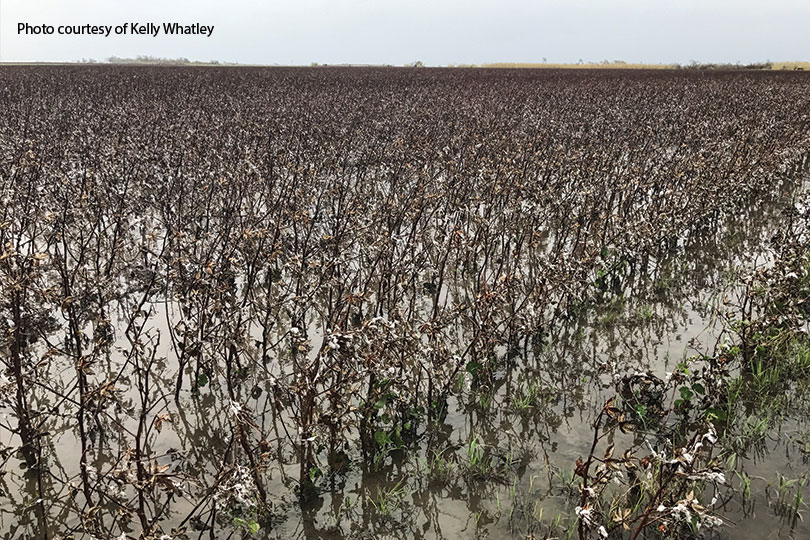By Julie Tomascik
Editor
Hurricane Harvey, now downgraded to a tropical storm, has left a devastating mark on Texas agriculture.
The hurricane slammed the Texas coast Friday, Aug. 25. Farmers and ranchers along the state’s coastal region faced high winds and torrential rainfall. Those rains are expected to continue this week, and Southeast Texas now faces severe flooding.
Harvey struck with a vengeance during the worst possible time—harvest season.
For cotton farmers in the region, some of the crop was left in the field, while others were able to finish harvest but unable to make it to the gin.
“The Coastal Bend area had around 300,000 acres [of cotton] in seven counties,” Harvey Buehring, Nueces County farmer, told the Texas Farm Bureau (TFB) Radio Network. “From all indications, we were about 97-98 percent complete. There are about 5,000 or so acres remaining in the fields.”
Some of the big damage was in the Refugio area, according to Buehring.
“Some of the modules that were out in the fields, tarps have been blown off. Modules have been blown away,” he said.
Saturation and water in low-lying areas for cotton modules in the field are also a concern.
“Victoria, Calhoun, Jackson area was about 85 percent complete with harvest in that area,” Buehring said. “Several growers in that area wrapped up with harvest just ahead of the landing of the storm.”
Some indications point to only about 25 percent of the Wharton County cotton crop was harvested.
Matagorda County cotton harvest was further along, with about 70-75 percent of the crop harvested.
The Brazos Bottom will suffer damage, Buehring said, but the crop wasn’t as far along.
“The Corpus Christi classing office had upgraded the crop to around a two million bale crop for the East Texas/South Texas area. That may have to be downgraded as a result of Hurricane Harvey,” he said.
The torrential rainfall will have a negative effect on crop production, and it could be a while before gins and grain elevators are back up and running.
Harvey is also striking an area home to a sizeable cattle herd. Farmers and ranchers are encouraged to call 2-1-1 for more information and emergency details about animal shelters and livestock holding facilities.
“Farm and ranch families worked around the clock to harvest crops and move livestock and equipment of their own and of their neighbors to escape Harvey’s reach,” TFB President Russell Boening said. “Rivers and creeks continue to rise from record rainfall in impacted areas. And so does the level of response of Texans helping Texans in this emergency situation in our state.”
Hear more Buehring on the TFB Radio Network.


is TFB setting up any relief efforts…many people wanting to donate and go through TFB